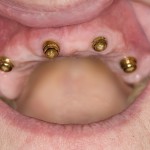
When dental implants were initially introduced in the 1970s they were kept load free for an initial period of about 3 months. Since then a number of studies and reviews have shown that immediate loading was possible. Various immediate protocols have been described and this review compares immediate functional loading (IFL), or immediate occlusal loading with immediate nonfunctional loading (INFL), or immediate non-occlusal loading
Methods
Searches were conducted in PubMed, Web of Science and the Cochrane Oral Health Group Trials register. This was supplemented with a manual search of dental implant related journals. Human clinical trials that compared implant failure rates in any group of patients receiving dental implants with non-occlusal immediate loading compared to occlusal immediate loading were considered. For this review implant failure was defined as complete loss of the implant. Three reviewers carried out study selection independently and quality assessment was undertaken using the Cochrane risk of bias approach.
Results
- 11 studies were included, 6 randomised controlled trials and 5 controlled trials.
- 4 studies were considered to be at low risk of bias and 7 at high risk of bias.
- Meta-analysis (11 studies) found no significant difference in failure rates between functional and non-functional loading RR of 0.87 (95% CI 0.44-1.75; P=0.70)
- Meta-analysis (5 studies) found no apparent significant effects of non-occlusal loading on the marginal bone loss (MD 0.01mm, 95% CI -0.04-0.06; P=0.74)
- Analysis of postoperative infection was not possible due to lack of data.
Conclusions
The authors concluded
The results of this meta-analysis suggest that the differences in occlusal loading between INFL and IFL might not affect the survival of these dental implants. There was also no statistically significant difference between the two techniques concerning the marginal bone loss.
Commentary
This meta-analysis includes an almost equal number of non-RCT studies as RCTs and which they can provide additional information they are, as highlighted by the authors, at greater risk of bias. The sample size in many of the studies was also small . This means that the results should be interpreted with caution. We recently considered another review (Dental Elf -3rd Sept 2014), which was looking at a slightly boarder aspect of the immediate versus conventional loading question, and they concluded that immediate loading represented a greater risk of failure. However, the 2013 Cochrane (Dental Elf -10th Apr-2013) review of different implant loading times was of the view that there were no clinically important differences with different loading times, which is similar to the current review.
Links
Chrcanovic BR, Albrektsson T, Wennerberg A. Immediate nonfunctional versus immediate functional loading and dental implant failure rates: A systematic review and meta-analysis. J Dent. 2014 Sep;42(9):1052-1059. doi: 10.1016/j.jdent.2014.06.010. Epub 2014 Jul 1. Review. PubMed PMID: 24995809.

[…] Dental Elf – 24th Sept 2014 – Dental implants: review finds no differences between immed… […]